In today’s society, the abuse and misuse of drugs have become significant public health concerns. To address this issue and regulate the distribution and use…
In today’s society, the abuse and misuse of drugs have become significant public health concerns. To address this issue and regulate the distribution and use of certain substances, the United States Drug Enforcement Administration (DEA) has established the drug schedule.
The DEA Drug Schedule classifies drugs into different categories based on their potential for abuse, medical value, and risk of dependence. Also, DEA plays a crucial role in administering and enforcing this system through its list of controlled medications.
The DEA’s list of controlled medications is organized into five categories known as drug schedules. Each schedule classifies drugs based on specific criteria. Schedule I consists of substances with a high potential for abuse and no accepted medical use, while Schedule V substances have a lower abuse potential and limited risk to public health. The classification of substances is regularly reviewed and can be adjusted based on new scientific evidence and changes in societal understanding.
For various reasons, individuals, healthcare professionals, law enforcement agencies, and policymakers must be aware of the DEA Drug Schedule. Understanding this classification system can help prevent drug abuse, ensure patient safety, guide legal enforcement measures, and support informed decision-making within the healthcare industry.
This guide aims to delve deeper into the benefits of being aware of the DEA Drug Schedule and shed light on the importance of understanding the classification of controlled substances. So, continue reading to learn more.
How the DEA Classify Drugs into Different Schedules

The Drug Enforcement Administration (DEA) classifies drugs into different schedules. The DEA classifies each substance based on its potential for abuse, medical use, and the level of dependence it may cause. The process of categorizing drugs into schedules involves a thorough evaluation of multiple factors.
The scheduling system, established by the Controlled Substances Act (CSA) in 1970, consists of five different schedules (Schedule I, II, III, IV, and V), with Schedule I being the most strictly regulated and Schedule V being the least restrictive.
When considering the scheduling of a substance, the DEA evaluates various criteria, including:
- Potential for abuse: The DEA assesses the likelihood and extent to which a substance may be abused, leading to physical or psychological dependence. Drugs with a higher potential for abuse are generally classified into stricter schedules.
- Medical use: The DEA examines the accepted medical use of a substance based on scientific evidence, professional opinions, and clinical studies. Drugs with recognized medical benefits tend to have less restrictive scheduling.
- Dependence liability: The DEA evaluates the level of physical or psychological dependence a substance may cause. Drugs with higher dependency risks are typically assigned to more stringent schedules.
- Safety considerations: The potential for harm and the safety profile of a substance are also taken into account. This includes the likelihood and severity of side effects, toxicity, and potential health risks associated with the drug’s use.
- International considerations: The DEA considers international treaties and agreements related to drug control when classifying substances.
It is important to note that the scheduling of drugs can vary based on legislative changes, scientific advancements, and emerging evidence regarding their potential risks and benefits. The DEA periodically reviews substances to reevaluate their scheduling, and changes can be made accordingly.
Schedule I Controlled Substances
Schedule I Controlled Substances is a category of drugs classified by the DEA as having no accepted medical use in the United States, lacking accepted safety under medical supervision, and possessing a high potential for abuse. The substances under this Schedule are considered the most dangerous and restricted within the drug scheduling system.
Due to their classification, Schedule I drugs are subject to severe criminal penalties, and their production, distribution, and possession are strictly regulated. The restrictions are in place to protect public health and minimize the risks associated with these substances.
Examples of Schedule I Controlled Substances include heroin, LSD (lysergic acid diethylamide), marijuana, peyote, methaqualone, and Ecstasy (MDMA). These substances are known for their psychoactive effects and are considered to have a high abuse and dependency potential.
Schedule II Controlled Substances
Schedule II Controlled Substances are drugs that have a high potential for abuse, with a currently accepted medical use in the United States. However, they are subject to severe restrictions due to the significant risks associated with their abuse potential. These substances have a higher potential for abuse compared to Schedule III, IV, and V drugs.
Examples of Schedule II Controlled Substances include oxycodone, morphine, fentanyl, methadone, and hydrocodone. These drugs are commonly used for pain relief, as they possess powerful analgesic properties. However, their potential for abuse and addiction has led to strict regulations surrounding their production, distribution, and use.
The classification of substances into Schedule II ensures that they are only obtained through legal means and their usage is closely monitored. This protects public safety, prevents misuse, and minimizes the risks associated with their abuse. Healthcare professionals, including physicians, must adhere to specific prescribing guidelines and regulations when prescribing Schedule II drugs to patients.
By tightly controlling the availability of Schedule II substances, authorities aim to strike a balance between ensuring access for patients in need and preventing misuse or diversion for non-medical purposes. This delicate balance is necessary to address public health concerns and ensure patient safety.
Schedule III Controlled Substances
Schedule III Controlled Substances are drugs with a lower potential for abuse than Schedule I and II substances but still carry a risk of dependence and misuse. These substances, although less addictive, can still lead to moderate to low physical and psychological dependence. The Drug Enforcement Administration (DEA) categorizes substances into Schedule III in order to balance their therapeutic benefits with the need for regulation.
Examples of Schedule III substances include anabolic steroids, codeine preparations, ketamine, and certain barbiturates. These substances are typically used for medical purposes such as treating pain, muscle spasms, and certain hormonal disorders. However, their abuse potential necessitates regulatory measures to prevent misuse and safeguard public health.
To be classified as a Schedule III substance, a drug must meet specific criteria established by the DEA. These criteria include the potential for abuse less than Schedule I and II drugs, currently accepted medical purposes in treatment in the United States, and an abuse potential that may result in moderate or low physical dependence or high psychological dependence.
The regulations surrounding Schedule III substances dictate that they can only be obtained through a prescription from a licensed healthcare provider. Healthcare professionals must follow strict guidelines and maintain accurate administration records when prescribing these substances. The purpose of these regulations is to protect patients, prevent drug diversion, and ensure the responsible use of these substances.
Schedule IV Controlled Substances
Schedule IV Controlled Substances refer to drugs that have a lower potential for abuse compared to drugs in the higher schedules. Despite their lower potential for abuse, these substances still pose a risk of physical or psychological dependence. They have accepted medical uses and are currently accepted as having a relatively low potential for abuse when compared to drugs in Schedules I, II, and III.
The classification of drugs into Schedule IV is primarily based on several factors, including their potential for abuse, current medical use, and the degree of dependence they can cause. Some examples of drugs classified as Schedule IV Controlled Substances include commonly prescribed medications like Xanax (alprazolam), Valium (diazepam), Ativan (lorazepam), and Ambien (zolpidem).
The therapeutic uses of Schedule IV drugs span many conditions, such as insomnia, anxiety disorders, panic disorders, and muscle spasms. These medications can provide relief and improve the quality of life for individuals suffering from these conditions when used as prescribed by a healthcare professional.
While Schedule IV Controlled Substances are considered to have a lower potential for abuse, it’s important to note that misuse or overuse can still lead to addiction or dependence. It is necessary to follow the prescribed dosage and duration of use to minimize any risks associated with these substances.
From a legal standpoint, the classification of drugs into different schedules helps regulate their distribution, possession, and prescription. Hence, the DEA closely monitors the handling of Schedule IV Controlled Substances to prevent their diversion and illicit use.
Schedule V Controlled Substances
Schedule V Controlled Substances are drugs that have the lowest potential for abuse compared to substances in the higher schedules. They have accepted medical uses and limited risk of physical or psychological dependence when compared to drugs in Schedules I to IV.
Schedule V drugs consist of medications that contain limited quantities of certain controlled substances, usually in combination with non-controlled substances. These medications are commonly used for medical purposes and have a low potential for abuse.
Examples of Schedule V Controlled Substances include cough syrups containing codeine in small amounts, antidiarrheal medications such as Lomotil (diphenoxylate/atropine), and certain prescription medications for pain relief, such as Lyrica (pregabalin) in specific doses.
The therapeutic uses of Schedule V drugs often include treating mild pain, cough suppression, or relief from diarrhea. They are considered to have a low potential for abuse and are typically available over the counter or with a prescription, depending on the specific medication. Although Schedule V drugs may have a reduced risk of abuse, it is still important to use them as directed by a healthcare professional to prevent complications or misuse.
From a legal perspective, the classification of drugs into different schedules allows for the appropriate regulation of their distribution, prescription, and possession. Monitoring Schedule V drugs helps ensure their safe use and prevents diversion for illicit purposes.
Prescribing and Refilling Controlled Substances

Prescribing and refilling controlled substances is a regulated process aimed at safeguarding public health and preventing potential abuse. Controlled substances are categorized into different schedules according to their potential for abuse and accepted medical use.
The Drug Enforcement Administration (DEA)—a division of the U.S. Department of Justice—oversees the proper prescribing and dispensing of these substances.
Prescribing controlled substances requires careful consideration and adherence to guidelines. Individual practitioners, such as physicians or researchers with a valid license, follow specific protocols. For example, researchers with a ‘Researcher’ license or their authorized agents are responsible for determining the need for controlled substances and signing all requisitions.
Manufacturers, suppliers, or distributors involved in dispensing controlled substances classified under Schedule I and Schedule II must utilize Drug Enforcement Administration (DEA) Form 222. This form serves as a record of transactions and helps ensure proper tracking and accountability of these substances.
When it comes to refilling prescriptions for Schedule II controlled substances, special precautions must be taken. Partial fills are allowed under certain circumstances, such as if the pharmacy does not have the full quantity of the prescribed substance in stock.
However, some requirements must be met. Each electronic controlled substance prescription record must include information linking each partial fill to the original prescription, ensuring accurate record-keeping and preventing abuse.
A number of specific details are required when writing prescriptions, and that includes:
- Prescriber’s name, address, and DEA registration number
- Patient name and address
- The name of the drug prescribed
- Drug dosage
- Drug quantity
- Strength
- Instructions on how to use the drug
- Number of drug refills authorized for the patient
Besides the details above, prescribers must also sign the prescription in ink on the specific date it is issued. The details must only be typewritten or written using ink.
Schedule I Regulations
Schedule I substances are considered to have a high potential for abuse and currently have no accepted medical use in the United States. Therefore, their use is tightly regulated by the DEA. The regulations about Schedule I controlled substances are stringent and aim to prevent their unauthorized use and distribution.
The DEA imposes strict requirements and restrictions on handling Schedule I substances. For example, anyone dealing with Schedule I substances must obtain a separate registration from the DEA’s Diversion Control Division. This includes manufacturers, researchers, distributors, and practitioners.
The registration process involves submitting application forms, providing background information, and ensuring compliance with security and record-keeping requirements.
Schedule II Regulations
The DEA enforces stringent regulations on the handling and distribution of Schedule II controlled substances. These regulations aim to prevent their misuse and abuse while ensuring public health and safety.
To handle, prescribe, or dispense Schedule II drugs, individuals and entities must adhere to various requirements imposed by the DEA.
Firstly, practitioners must possess a valid DEA registration, which involves a registration process similar to that for Schedule I substances. This includes submitting application forms, providing background information, and complying with security and record-keeping obligations.
Prescriptions for Schedule II drugs cannot be refilled, and a new prescription must be issued for each dosage unit. Additionally, prescriptions must be handwritten or electronically generated and signed by the prescribing practitioner. The DEA also mandates that pharmacies maintain perpetual inventories and secure storage facilities for Schedule II drugs.
Schedule III, IV, and V Regulations
Schedule III, IV, and V controlled substances are regulated under the federal Controlled Substances Act. The regulations surrounding these substances provide guidelines for handling and administration to ensure public safety and prevent abuse.
Individuals and entities wishing to handle Schedule III, IV, and V controlled substances must obtain a valid DEA registration or permit. The permitting process involves similar procedures to those for Schedule II drugs, including completing application forms, providing background information, and complying with security and record-keeping requirements.
Sharing or distributing these substances with non-registered users is strictly prohibited. Only individuals with valid permits or registrations can handle and administer Schedule III, IV, and V controlled substances.
Proper disposal procedures are also outlined to prevent these substances from falling into the wrong hands. Individuals and entities must safely dispose of unused or expired Schedule III, IV, and V controlled substances in compliance with federal and state regulations.
Changing DEA Drug Schedules

The Drug Enforcement Administration has the authority to change or remove controlled substances and drugs from a specific schedule, primarily if there is solid evidence that one does not belong in an appropriate schedule. The change can also be initiated by the Department of Health and Human Services and other interested parties for the following reasons:
- Medical groups or associations
- State or local governments
- Drug manufacturers
- Citizens
- Pharmacies
When other parties request the change, DEA gathers the needed information about the certain substance from a variety of sources available. It evaluates and takes into account the validity of the change under the following determiners:
- The drug’s potential for abuse
- The drug’s physical and psychological dependence liability
- Public health risks
- Scientific evidence of the drug’s pharmacological effects
- The scientific knowledge regarding the drug
- Information if the drug is already controlled or just an immediate precursor
- The drug’s history and present pattern of abuse
- The drug’s duration, scope, and significance of abuse
There were already a few requests regarding DEA drug schedules, and the most well-known schedule change would probably be the requested change for marijuana, which was declined. Generally, the DEA has been rescheduling drugs based on public requests.
For instance, it has rescheduled the hydrocodone combination products from Schedule III to Schedule II because of the public’s petitions that were supported by the evidence that the substances were being abused.
Temporary Scheduling

Temporary scheduling is a process utilized by the Drug Enforcement Administration (DEA) to expedite the control of substances for a limited period while further research is conducted to determine their permanent scheduling status.
During this temporary scheduling period, which can last up to two years, substances are placed in either Schedule I or Schedule II and are subject to restrictions on manufacturing, distribution, and possession, with the exception of research purposes.
This allows the DEA to swiftly address emerging substances with potential abuse and public health risks while gathering the necessary evidence to make informed decisions regarding their long-term scheduling.
Moreover, temporary scheduling has been employed for various substances, including synthetic opioids and cannabinoids, highlighting the DEA’s commitment to safeguard public safety by promptly regulating substances of concern.
Let’s know some of the drugs that the DEA has temporarily scheduled:
DEA’s temporary drug scheduling is an effort to help law enforcement efficiently keep up with the illicit chemists. Besides that, authority is also a helpful way to regulate known substances that have become trendy for abuse.
In fact, DEA issued a notice to temporarily categorize Kratom in Schedule I from Schedule II in 2016 because the plant has been found to have similar effects to opioids, and many increasingly abused it as an opioid substitute. Ultimately, it was reported that Kratom was involved in hundreds of poison control calls and became a public health threat. This forced the DEA to reschedule it temporarily.
After temporarily scheduling Kratom, DEA received input from the public and scientific community that made it withdraw its notice of intent to schedule Kratom in just a few months and announced that it would still accept public comment until December 2016 to effectively determine the right way to manage Kratom. That means DEA balances everything—from solid evidence, information, and the public’s opinion—to know the best regulation for each drug and schedule.
Frequently Asked Questions
In this section, we aim to answer some of the most common queries surrounding the DEA Drug Schedule, providing clarity and understanding to individuals seeking information on drug classifications, controlled substances, and the implications of these designations.
What is the purpose of the DEA Drug Schedule?
The purpose of the DEA Drug Schedule is to categorize drugs based on their potential for abuse and medical usefulness. The Drug Enforcement Administration (DEA) in the United States has established this classification system to regulate and control substances that have the potential to be misused and negatively impact public health.
The primary objective of the DEA Drug Schedule is to provide a framework for law enforcement agencies, healthcare providers, and the general public to understand the relative dangers and medicinal value of different drugs.
By classifying substances into different schedules, the DEA aims to prevent the illegal manufacture, distribution, possession, and use of drugs that pose significant risks to individuals and society.
How often does the DEA update the Drug Schedule?
Typically, the DEA updates the Drug Schedule when new substances are found to meet the criteria for control or when existing substances need to be reevaluated.
The frequency of updates to the Drug Schedule can vary depending on several factors. The DEA constantly monitors new drugs and emerging trends in substance abuse to identify substances that may need to be controlled.
Additionally, new scientific research and clinical studies can provide valuable insights into the potential risks and benefits of certain substances. As a result, the DEA may reassess the scheduling of certain drugs based on this evolving scientific and medical knowledge.
Once a substance is identified as a potential candidate for scheduling or rescheduling, the DEA initiates a comprehensive review process. This involves an extensive examination of the available scientific evidence, including studies on pharmacology, chemistry, pharmacokinetics, abuse potential, and medical use.
The DEA also seeks input from medical experts, scientific organizations, law enforcement agencies, and the public.
The timeframe for updating the Drug Schedule can vary and is influenced by the complexity and significance of the drug under consideration. It may take several months or even years for the DEA to complete the evaluation, gather sufficient data, and make an informed decision. However, in urgent cases where a substance threatens public safety, the DEA can take emergency action to control it temporarily.
Can a drug’s schedule change over time?
Yes, a drug’s schedule can change over time. The Drug Enforcement Administration (DEA) periodically reviews and reassesses the classification of controlled substances based on scientific evidence and medical knowledge. The scheduling of a drug can be subject to change if new information emerges regarding its potential for abuse, accepted medical use, and overall risk to public health and safety.
There are several reasons why a drug’s schedule may change. One common scenario is when a new substance is discovered or synthesized that meets the criteria for control under the Controlled Substances Act (CSA).
In such cases, the DEA may initiate the process to add the drug to the Drug Schedule. This often involves a comprehensive evaluation of the available scientific evidence, including research on the drug’s pharmacology, potential for abuse, addiction potential, and medical or therapeutic properties.
Furthermore, the scheduling of a drug can also change if new studies or clinical trials provide additional insights into its effects and risks. The DEA may consider these findings when determining whether the current classification of the drug accurately reflects its properties and potential for harm or benefit. In some cases, a drug may be rescheduled to a higher or lower schedule based on new information.
What are the most commonly abused drugs in different schedules?
While it is important to note that all substances can be potentially abused, here are some examples of commonly abused drugs in each schedule:
Schedule I:
Schedule I drugs are considered to have a high potential for abuse and no accepted medical use. Some commonly abused substances in this schedule include:
1. Cannabis (Marijuana): Despite its increasing legalization for medical and recreational purposes in various states, marijuana remains a commonly abused substance.
2. LSD: Also known as acid, LSD is a hallucinogenic drug that can cause intense changes in sensory perception and affect one’s mood.
3. Heroin: Heroin is a highly addictive opioid drug made from morphine and is known for its powerful euphoric effects.
Schedule II:
Schedule II drugs have a high potential for abuse but are recognized for their narrow medical uses. Some commonly abused substances in this category include:
1. Opioids: Drugs such as oxycodone (OxyContin), hydrocodone (Vicodin), and fentanyl are highly addictive and commonly abused for their pain-relieving effects.
2. Amphetamines: Drugs like Adderall and Ritalin, prescribed for attention deficit hyperactivity disorder (ADHD), are often abused for their stimulant effects.
3. Cocaine: A powerful stimulant that produces a sense of euphoria, cocaine is frequently abused for its energizing and addictive properties.
Schedule III:
Schedule III drugs have a moderate potential for abuse and accepted medical uses. Some commonly abused substances in this category include:
1. Anabolic Steroids: These substances are often abused by bodybuilders and athletes to improve muscle growth and physical performance.
2. Ketamine: Originally used as an anesthetic, ketamine is abused for its dissociative and hallucinogenic effects.
3. Products containing codeine: Medications containing codeine, such as certain cough syrups, are sometimes abused for their euphoric effects.
Schedule IV:
Schedule IV drugs have a lower potential for abuse compared to the previous schedules, along with accepted medical uses. Some commonly abused substances in this category include:
1. Benzodiazepines: Medications like Xanax, Valium, and Ativan, prescribed for anxiety and sleep disorders, can be abused for their calming and sedative effects.
2. Zolpidem: Also known as Ambien, this sleep medication can be misused for its sedative properties and potential for euphoria.
Schedule V:
Schedule V drugs have the lowest abuse risk and acceptable medical uses. Some commonly abused substances in this category include:
1. Cough syrups containing low doses of codeine: While these medications are typically less addictive, they can still be misused for their sedative effects.
What is the process for rescheduling a drug?
Rescheduling a drug involves several steps and is governed by the United States Drug Enforcement Administration (DEA). Here is an overview of the process:
Petition: The first step in rescheduling a drug is to submit a petition to the DEA.
Evaluation: Once the petition is received, the DEA evaluates the request.
FDA Consultation: As part of the evaluation process, the DEA consults with the Food and Drug Administration to assess the drug’s medical benefits, potential risks, and any known adverse effects.
DEA Recommendation: Based on the evaluation and FDA input, the DEA makes a recommendation regarding the rescheduling of the drug. They can recommend moving the drug to a different schedule, keeping the current schedule, or denying the request for rescheduling.
Notice of Proposed Rulemaking (NPRM): If the DEA recommends a schedule change, they publish an NPRM in the Federal Register. This notice allows the public to comment on the proposed rescheduling.
Final Decision: After considering all relevant information and public comments, the DEA makes a final decision on whether to reschedule the drug.
Implementation: Once the rescheduling decision takes effect, it becomes legally binding. The DEA updates its official drug schedules to reflect the new classification and various legal and regulatory implications follow.
It is important to note that the rescheduling process can be complex and takes a long period of time, as it involves careful consideration of scientific evidence, public input, and the potential impact on public health and safety.
Are there any drugs that are not classified under the DEA Drug Schedule?
No, all controlled substances in the United States are classified under the DEA Drug Schedule. The DEA Drug Schedule is a system that categorizes drugs based on their potential for abuse, medical use, and safety.
The schedule ranges from Schedule I to Schedule V, with Schedule I drugs having a high potential for abuse and no accepted medical use, while Schedule V drugs have a low potential for abuse and accepted medical uses. It is mandatory for all controlled substances to be classified under one of these schedules.
Are there any federal benefits to rescheduling a drug?
Yes, there can be federal benefits to rescheduling a drug. Here are a few potential benefits:
Medical Research: Rescheduling a drug may make it easier for researchers to conduct studies on its potential medical benefits and risks.
Access to Treatment: Rescheduling a drug may increase patient access to medical treatments.
Regulatory Framework: Rescheduling a drug can provide a clearer regulatory framework for its use.
Public Health and Safety: By rescheduling a drug, the federal government can potentially mitigate the risks associated with its misuse or abuse.
Legal Consequences: Rescheduling a drug may lead to changes in the legal consequences associated with its possession, distribution, or manufacture.
Can states have their own drug schedules in addition to the DEA Drug Schedule?
Yes, states have the authority to create and enforce their own drug schedules, in addition to the federal DEA Drug Schedule. While the DEA Drug Schedule is a federal classification system that determines the potential for abuse, medical use, and safety of various drugs, states have the autonomy to modify or expand upon these classifications to suit their specific needs.
Many states have established their own drug schedules to address the unique drug-related challenges they may face within their jurisdiction. These state schedules may differ from the DEA Drug Schedule in terms of how drugs are categorized and regulated, and they may include additional substances not classified by the federal government.
Final Thoughts
With everything discussed above, there is no doubt that the DEA drug schedules are meant to safeguard the public from dependency, abuse, and harmful side effects. In fact, the classification of substances within the drug scheduling system is not static and can evolve over time as new scientific evidence emerges.
This allows for the reevaluation of substances and adjustments in their classification based on a better understanding of their medical benefits, safety, and potential for abuse. After all, this system aims to strike a balance between providing access to medications with medical value and safeguarding public health and safety.
Like the Drug Enforcement Administration, Costa Rica Treatment Center aims to save people from being harmed by substances. Aside from providing resources and guides about prescription drugs, drug classifications, and more, we primarily help individuals be free from addiction.
Taking pride in our evidence-based treatment programs, we are confident to help anyone gain their freedom from addiction to have better mental health and quality of life. Since there are a lot of substances that have the potential for abuse and addiction, it will be great to keep in mind that you can find Costa Rica Treatment Center as a reliable partner to save you or your loved ones.
Explore our site for more, or contact us to know more about our services and how we can help you.








